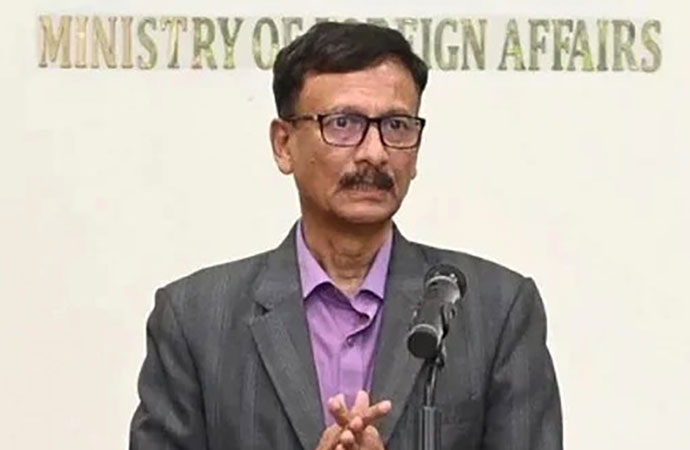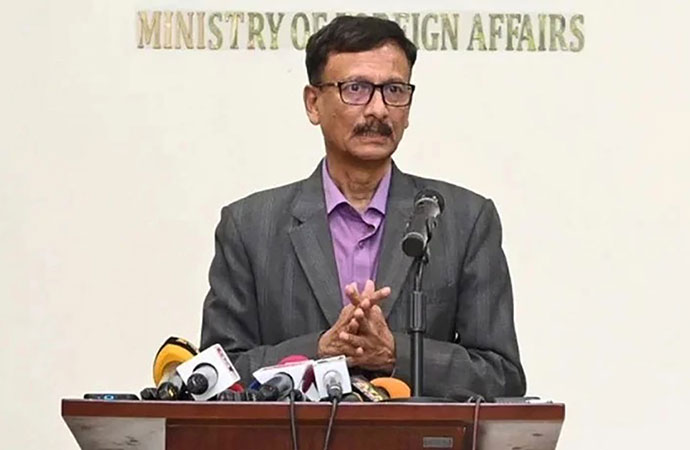Business

Xi Jinping, general secretary of the Communist Party of China Central Committee, also Chinese president and chairman of the Central Military Commission, delivers an important speech at the central financial work conference in Beijing, capital of China. The central financial work conference was held in Beijing from Monday to Tuesday. Li Qiang, Zhao Leji, Wang Huning, Cai Qi, Ding Xuexiang and Li Xi also attended the conference. Photo: Xinhua
Last month’s Central Financial Work Conference underscored areas where China’s central government should intervene to strengthen and stabilize the economy, from restoring local-government balance sheets to supporting innovation. But this does not mean that China is embracing greater economic centralization.
Last month, China held its first Central Financial Work Conference - the highest-level review of the financial sector that the Communist Party of China (CPC) conducts - since 2017. Given that China's financial sector includes the world's largest banking system by assets ($53.1 trillion) - and the second-largest (after the United States) by stock-market capitalization - and that the full Politburo Standing Committee attends the conference, the decisions made, and even the tone struck, have global implications.
The report released after the conference confirmed that the CPC's fundamental view of the financial sector has not changed. For China's leaders, the fundamental function of finance is to serve the real economy, and the government is responsible for maintaining stability, managing risks, and promoting homegrown innovation and high-quality development.
But the focus of the discussions shifted significantly since 2017, when the main priority was managing the imbalances arising from shadow banking, local-government spending, and real-estate excesses. All of the risks in these domains had been exacerbated by the massive monetary and fiscal stimulus that China's government implemented in the wake of the 2008 global financial crisis.
Last month, monetary and fiscal policy were again at the top of the agenda, but the circumstances - and associated challenges - were very different. After all, China tightened its macroeconomic-policy stance years ago. The key question now is: How should monetary and fiscal policy be adapted and deployed to support quality growth and structural reform in the face of changing internal and external conditions?
Among the most important external factors China's leaders must consider is the enduring looseness of monetary and fiscal policy in OECD countries. According to Federal Reserve data, the one-year real interest rate in the US has been mostly negative since 2009. This was true even last year: though the Fed consistently raised rates in an effort to rein in surging inflation, the one-year real interest rate amounted to -1.9%.
One finds similar rates in the eurozone, Japan, and the United Kingdom. But in China, real interest rates are much higher, even though the nominal interest rate is low. According to World Bank data, China's real interest rate in 2022 reached 2.1%, compared to just 0.2% in India.
This monetary-policy divergence has had far-reaching implications for China's financial sector and foreign-exchange markets. In the four quarters ending in June 2023, China's portfolio investment deficit (net outflow) reached $186 billion, compared to just $96 billion in the previous four quarters. And in the first nine months of 2023, China's real effective exchange rate fell by 5.4%, because its inflation rate was below that of its major trading partners.
Internally, China faces the momentous challenge of decarbonizing its economy. Achieving peak carbon emissions by 2030 and net-zero emissions by 2060 - per China's "30-60" commitment - is essential to enable high-quality, sustainable development. But, in the short term, decarbonization puts considerable downward pressure on growth. After all, China's manufacturing value-added still accounts for some 28% of GDP - far higher than the 13% average for OECD countries.
This tension between short-term considerations and long-term goals extends far beyond decarbonization; in fact, it defined last month's conference. To get to the long term, China must overcome short-term liquidity issues caused by recent shifts and shocks, including developed-economy interest-rate hikes, the COVID-19 pandemic, geopolitically motivated changes to supply chains, and falling asset prices.
Only with abundant liquidity can China counter deflationary pressures and weakening consumer and investor confidence; restore local-government balance sheets (which were severely damaged by the COVID-19 pandemic); and finance innovation (crucial to China's long-term prosperity). Massive amounts of funding will also be needed to meet China's decarbonization goals.
Mobilizing the necessary resources will require a lower real interest rate, which would also help China to address short-term issues like asset-price deflation and overcome medium- and long-term challenges, from stabilizing the real-estate sector to coping with population aging. Fortunately, China built up considerable financial assets and reserves during its decades of rapid growth, so it has the monetary and fiscal space it needs to meet short-term liquidity needs and support long-term structural reforms.
While the conference report underscored areas where the central government will intervene to strengthen and stabilize the economy - from restoring corporate and local-government balance sheets to supporting investment in innovation - it would be a mistake to assume that China is embracing greater economic centralization. On the contrary, the conference report reaffirmed the need for the financial sector to support high-quality, sustainable development, by financing innovation, improving efficiency, and continuing to open up.
To this end, the report endorsed a major upgrading of the equity market, including diversifying channels for equity financing. Chinese leaders recognize the crucial role of such funding in sharing and managing risk in areas ranging from innovation and advanced manufacturing to food and energy security.
Moreover, the conference report highlighted China's need for private firms to contribute to economic growth and upgrading. This includes foreign companies and investors, whose interest in the Chinese market remains robust, despite geopolitical tensions. At the recent Shanghai China International Import Expo - one of the world's largest trade fairs - US firms comprised the largest foreign delegation.
China's massive and complex economy is defined by tensions between the central and local governments, the public and private sectors, various regions, and internal and external conditions. In such a system, a central authority must take responsibility for maintaining overall stability and defining the policy direction.
But just as unbridled liberalization would lead to chaos, excessive centralization would impede growth and development. That is why, even as it reaffirms the government's role in ensuring macroeconomic stability, the conference report reflects an enduring commitment to opening up the Chinese economy gradually to foreign investment and private competition. Add to that the thawing of US-China relations augured by Chinese President Xi Jinping's recent meeting with his American counterpart, Joe Biden, and there is plenty of reason to believe that the China of tomorrow will be more innovative, open, and dynamic than ever.
From Project Syndicate

























Leave a Comment
Recent Posts
Remembering Kalidas Karmakar ( ...
The art world remembers Kalidas Karmakar, a visionary whose creativity ...
An Evening with Shishir Bhatta ...
Cosmos Art Echo, the artist talk initiative of Gallery Cosmos and Cosm ...
Myanmar denies genocide, calls Rohingya crackdown co ..
Yes, of course
Earth’s average temperature last year hovered among ..
Bangladesh and Singapore: A Tale of Two Nations